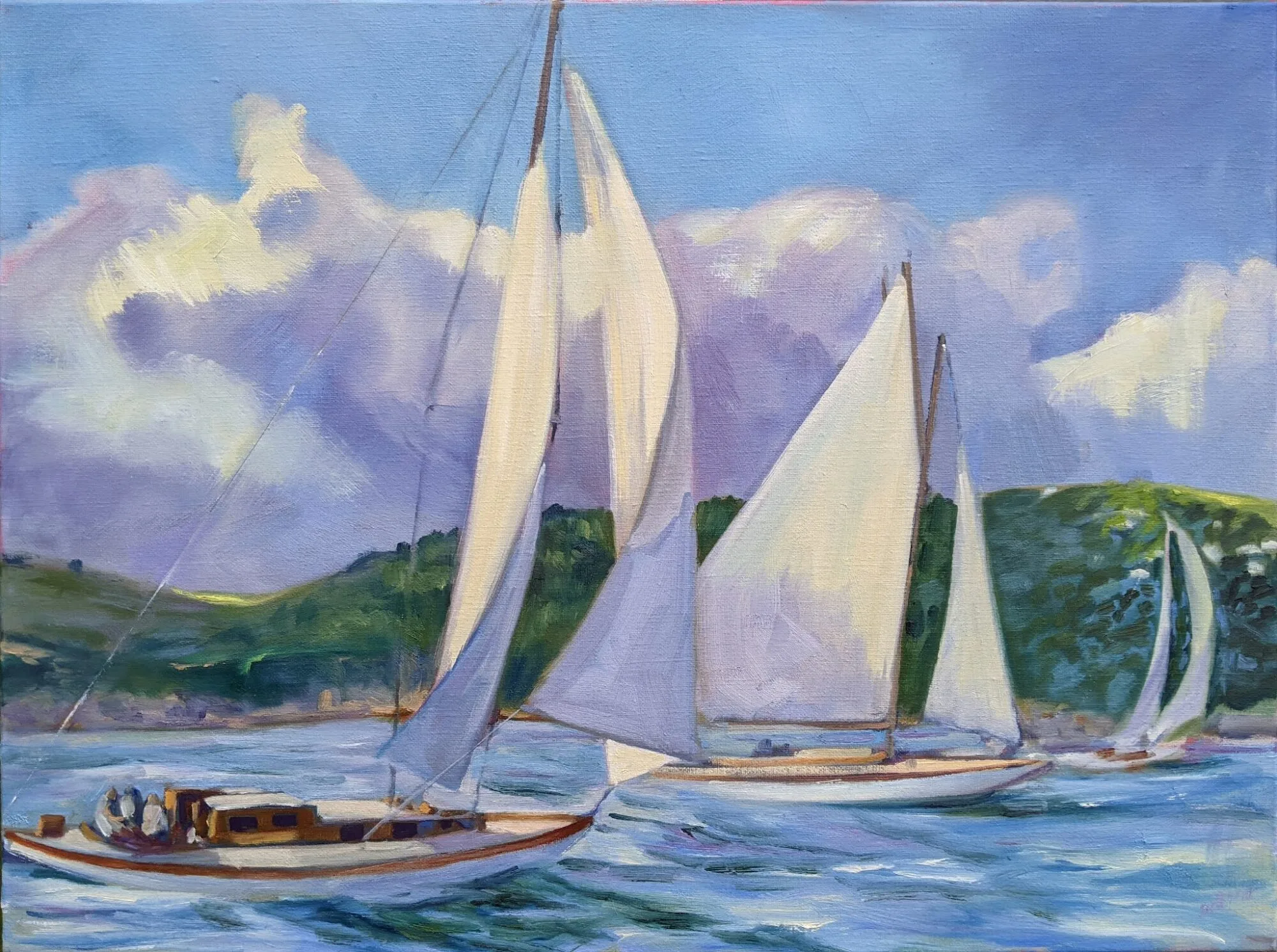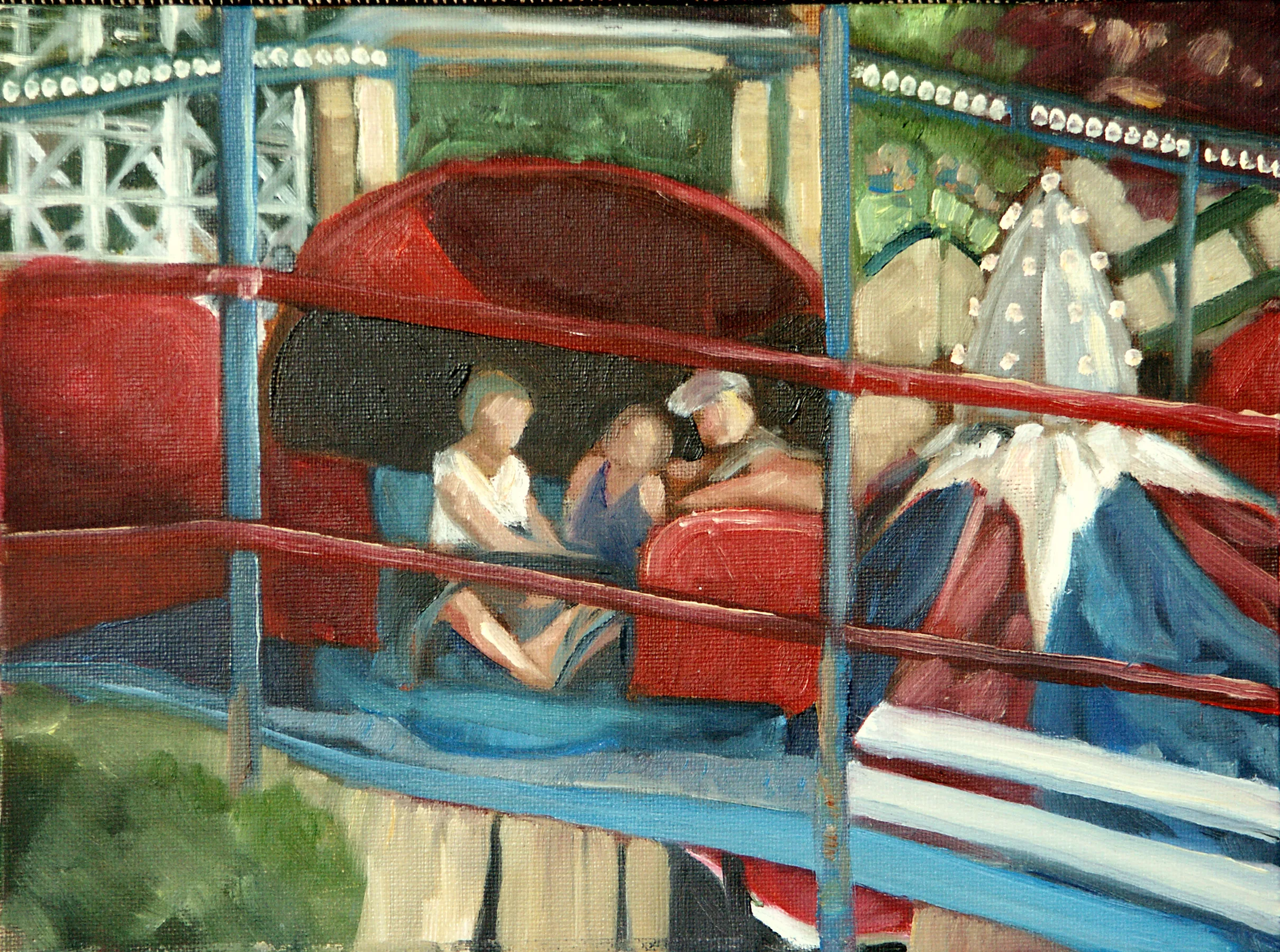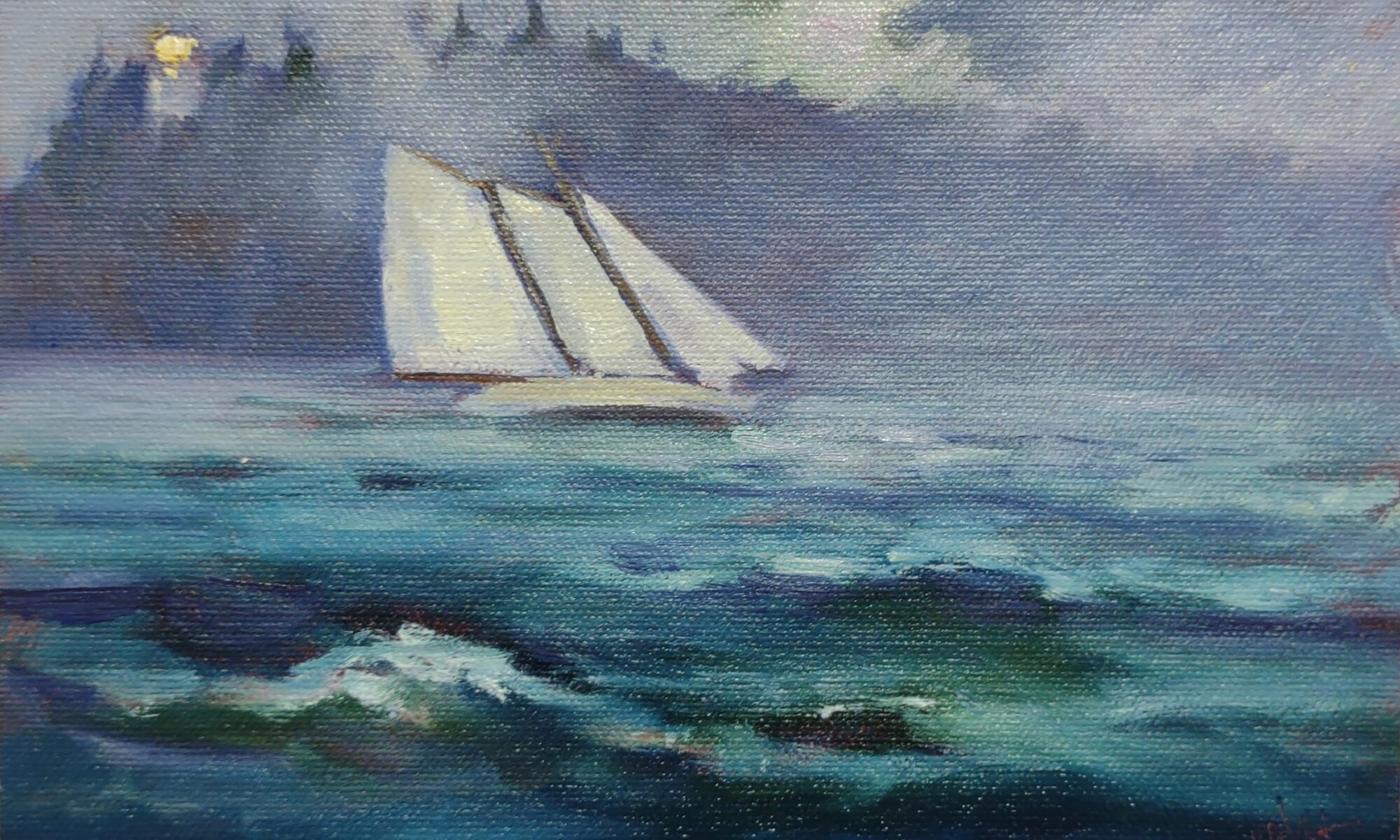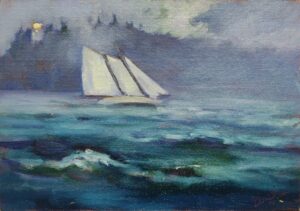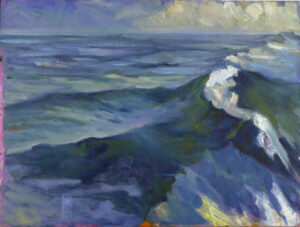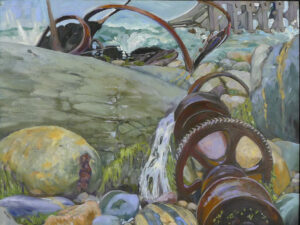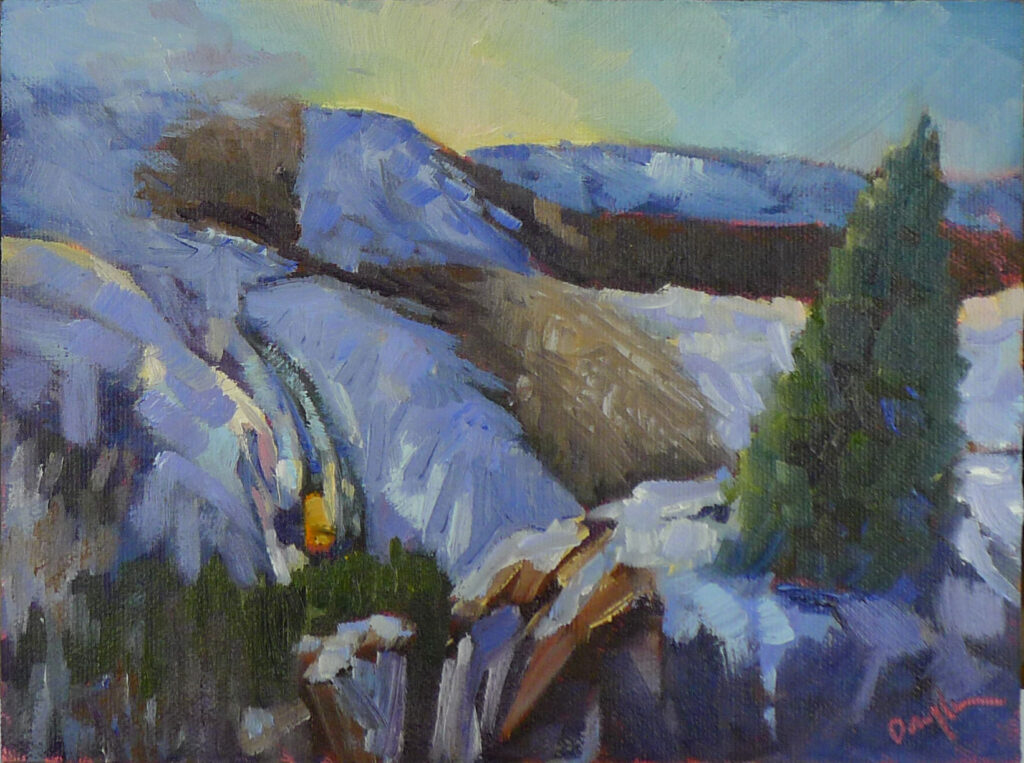
L is the leader of a small rebellion among my students. They don’t like the constraints of single-pigment paints. Their motto is, “In the absence of a good idea, let’s buy art supplies.” Our last paint conversation went like this:
“That green cannot be mixed with the colors on your supply list.” L then pulled out a tube of permanent green recently purchased at the art supply store.
“Okay, what are the pigments in that tube?” (On reputable paints, there are tiny alphanumeric codes that starts with the letter P. These are more important than the poetical names on the tubes.)
“PG7+PY3…”
“And what are they when they’re at home?” I asked.
“Chlorinated copper phthalocyanine and arylide yellow.”
“Which are…” I lead.
“Phthalo green and Hansa yellow.”
“So why would you buy a mix of two pigments when you already have Hansa yellow on your palette?” I ask. And then demonstrated that the painting in question was mixed with phthalo blue and Hansa yellow in the first place.
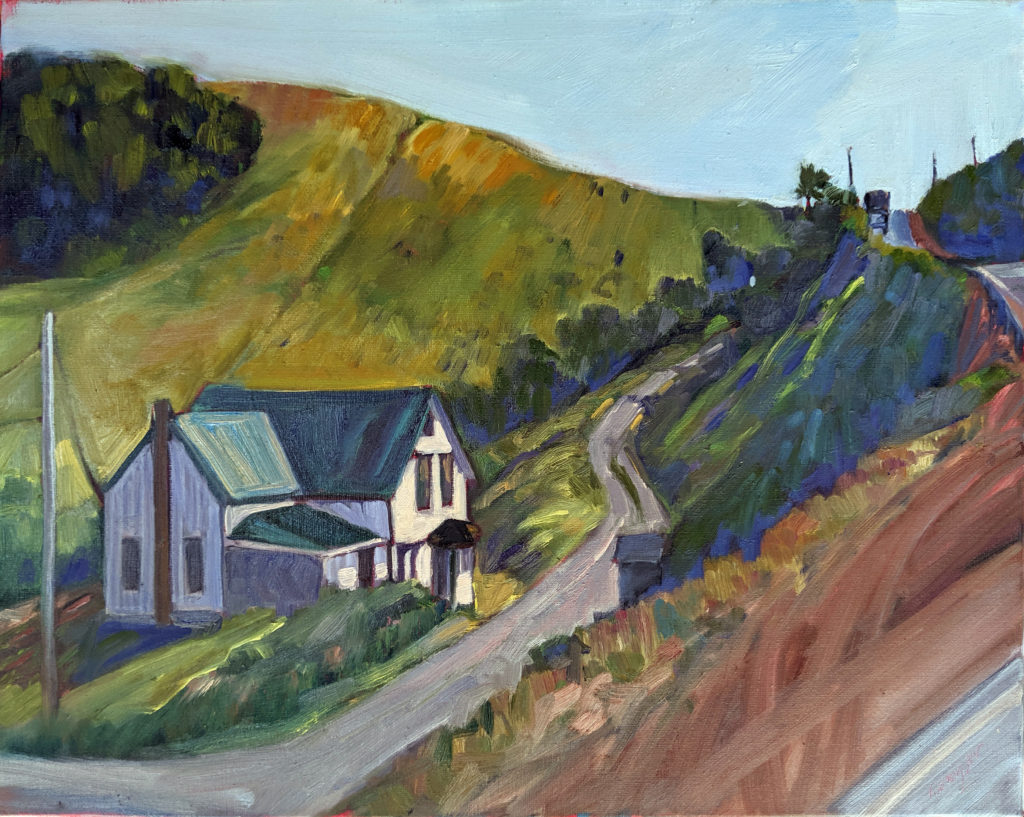
The more experienced you are, you less stuff you buy
Buying excess art supplies can be fun, or it can be a form of flailing around. It can be a search for something that will elevate your art. It can also be displacement behavior; it’s simply easier than buckling down, especially when what’s on your easel isn’t going well. I speak from experience here. I have a large studio, and way too much of it is filled with stuff I never use.
How to choose the right art supplies
Start by knowing what it is you want to do. While this seems obvious, I have lots of art supplies in various media I’ll never pick up again. To a point, experimentation is good, but it can also be expensive.
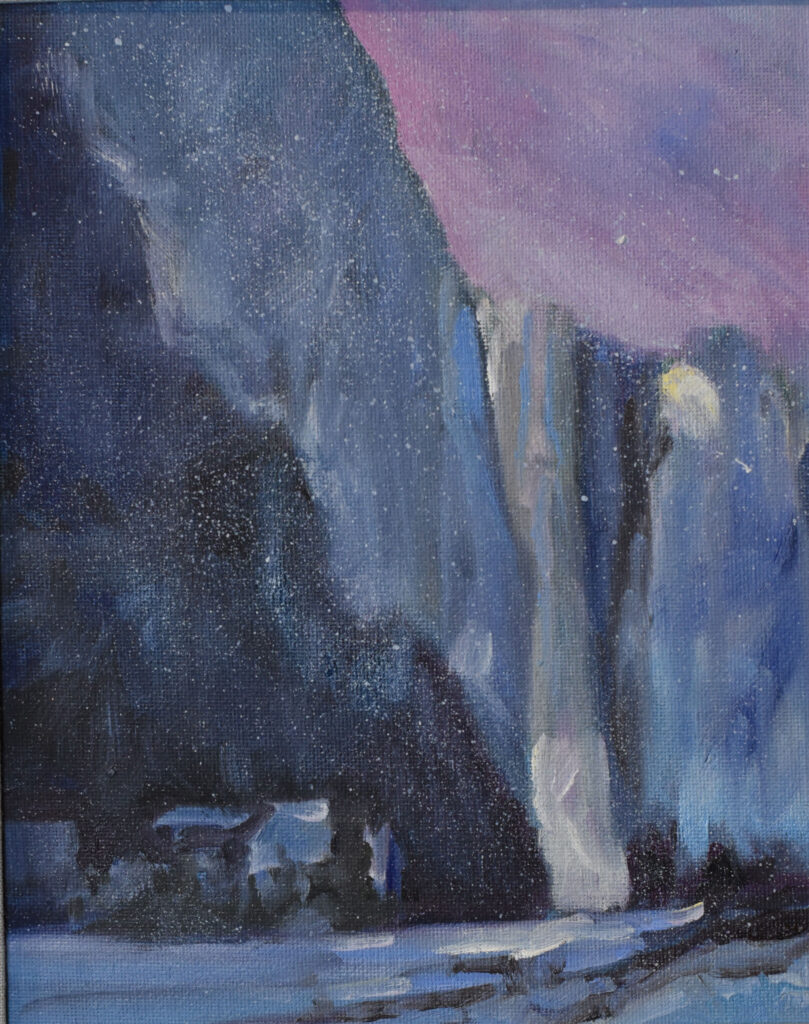
How much are you willing to spend?
Art supplies range widely in price. While quality materials are expensive, it’s not true that the best materials cost the most. For example, while I paint with Gamblin’s artists oil range, I’m happy recommending their 1980 range as well. Likewise, I think Princeton Snap and Neptune line brushes are excellent and do not cost a fortune. And nobody who’s just learning needs a top-end archival oil-painting board.
Less is more
Three good brushes are worth more than a dozen very cheap ones. Likewise, you can get away with six colors in watercolor and seven in oil paint (those paired primaries plus white), if they’re decent quality paints. A set of 18 cheap paints is a very bad bargain.
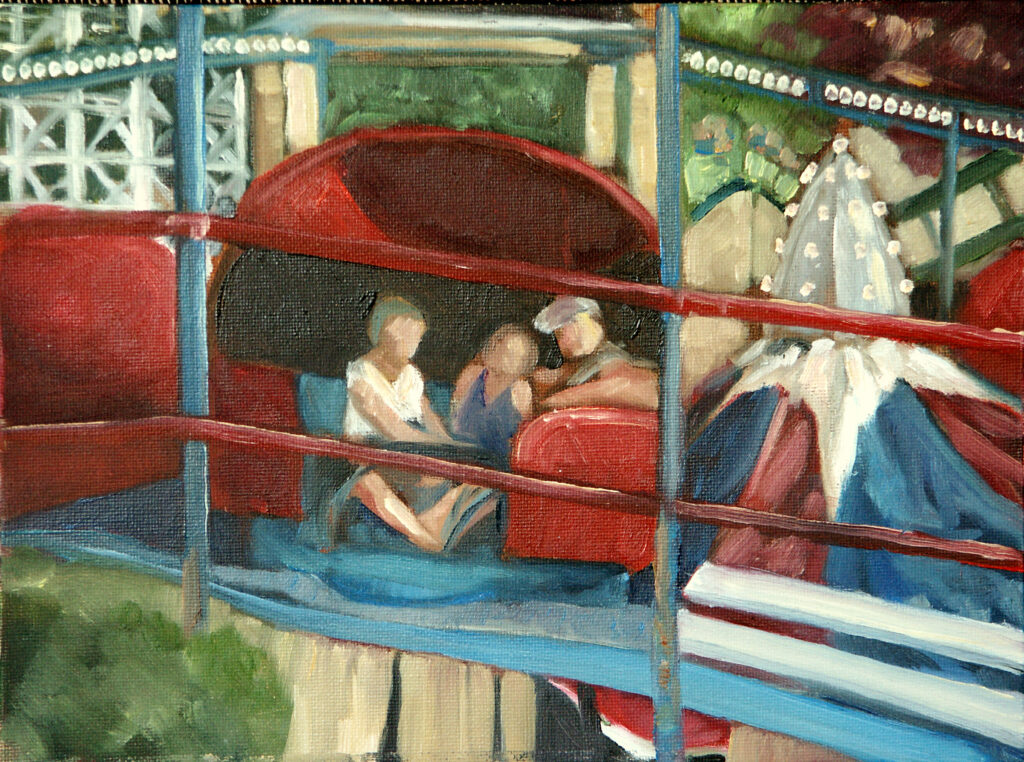
Research and Compare
I’m happy to share my supply lists with interested painters. (Here they are for oils, watercolors, pastels, and acrylics.) These are a moving target; my students give me feedback and I adjust them over time. Likewise, you should read reviews and ask for recommendations from other artists. Look for online resources and tutorials that can help you learn about different materials. And never feel pressured to buy everything at once.
This spring’s painting classes
Zoom Class: Advance your painting skills (whoops, the link was wrong in last week’s posts)
Mondays, 6 PM – 9 PM EST
April 28 to June 9
Advance your skills in oils, watercolor, gouache, acrylics and pastels with guided exercises in design, composition and execution.
This Zoom class not only has tailored instruction, it provides a supportive community where students share work and get positive feedback in an encouraging and collaborative space.
Tuesdays, 6 PM – 9 PM EST
April 29-June 10
This is a combination painting/critique class where students will take deep dives into finding their unique voices as artists, in an encouraging and collaborative space. The goal is to develop a nucleus of work as a springboard for further development.
Reserve your spot now for a workshop in 2025:
- Advanced Plein Air Painting, Rockport, ME, July 7-11, 2025.
- Sea and Sky at Acadia National Park, August 3-8, 2025.
- Find Your Authentic Voice in Plein Air, Berkshires, MA, August 11-15, 2025.
- Immersive In-Person Fall Workshop, Rockport, ME, October 6-10, 2025.
